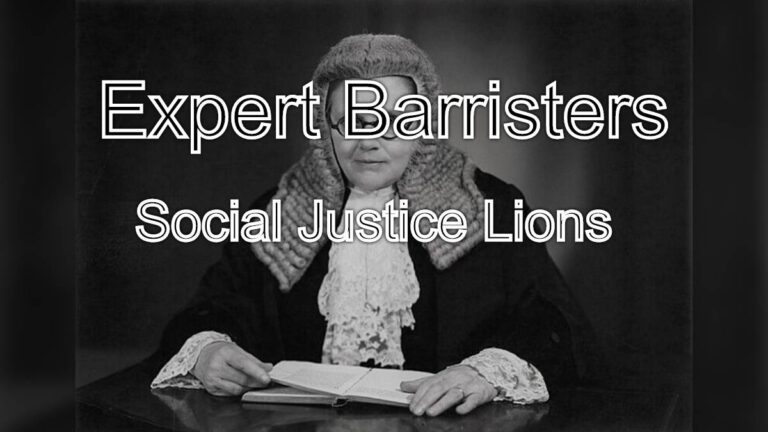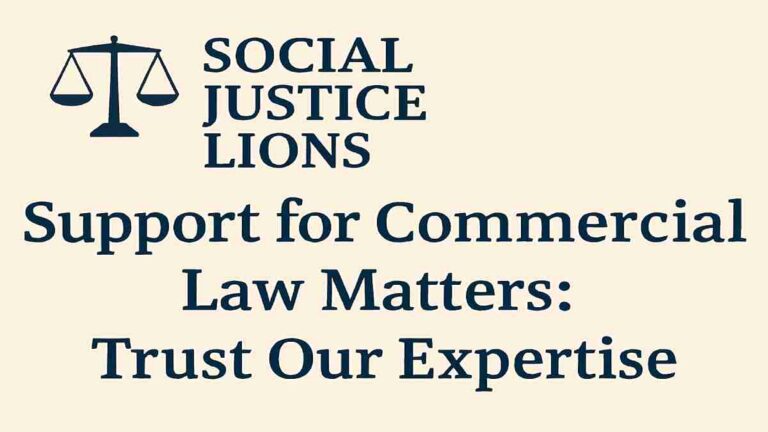Protecting Intellectual Property: Trust Our Expertise
Protecting Intellectual Property: Innovation fuels progress. Creativity drives our world forward. Thus, ideas hold immense value today. These unique creations form a vital asset. This asset is called Intellectual Property, or IP. Consequently, protecting your IP becomes absolutely crucial. It safeguards your inventions. It also secures your brands. Furthermore, it defends your original works. Ignoring IP protection can lead to significant losses. You might lose your competitive edge. Therefore, understanding IP protection is non-negotiable for creators and businesses alike. Our firm offers deep expertise in this specialized field. We help clients navigate complex IP laws. We ensure their valuable assets remain secure.
Protecting Intellectual Property: Trust Our Expertise: Social Justice Lions
What is Intellectual Property?
Intellectual Property refers to creations of the mind. It includes inventions. It also covers literary and artistic works. Additionally, it encompasses designs and symbols. Furthermore, names and images used in commerce fall under this umbrella. IP gives creators exclusive rights. These rights allow them to profit from their work. They also control its use. However, these rights are not automatic in all forms. Proper legal steps are often necessary. Therefore, knowledge of various IP types is essential.
Types of Intellectual Property: A Detailed Look
Intellectual Property broadly categorizes into several key types. Each type protects a different kind of creation. Each also requires specific protection methods.
Patents: Guarding Inventions
First, patents protect inventions. An invention can be a new product. It might also be a novel process. Furthermore, it could be an improvement on existing technology. Patents grant the inventor exclusive rights. This means others cannot make, use, or sell the invention. This protection lasts for a limited period. Generally, it is 20 years from the filing date.
There are different types of patents. A “utility patent” protects how something works. A “design patent” protects its ornamental appearance. Moreover, a “plant patent” protects new plant varieties. Obtaining a patent is a rigorous process. First, an inventor files a patent application. This application details the invention precisely. Then, patent examiners review it thoroughly. They check for novelty, non-obviousness, and utility. Finally, if all criteria are met, the patent is granted. Subsequently, the patent holder has exclusive statutory rights. If someone uses the invention without permission, it constitutes patent infringement. This can lead to significant legal action.
Trademarks: Securing Brands and Identity
Second, trademarks identify a source of goods or services. They include words, phrases, logos, or designs. For instance, a company name is a trademark. Its specific product logo is also a trademark. Trademarks prevent consumer confusion. They help distinguish your products from competitors. A strong trademark builds brand recognition. It fosters consumer loyalty.
Trademark rights can arise in two ways. “Common law rights” develop from actual use in commerce. These rights are geographically limited. However, “trademark registration” provides much broader protection. Registration occurs with a government office, like the USPTO in the United States. This registration grants nationwide exclusive rights. It also provides a legal presumption of ownership. Moreover, it allows the trademark owner to sue for infringement in federal court. Consequently, if a competitor uses a similar mark, they commit trademark infringement. Dilution also occurs if a famous mark’s distinctiveness is weakened. Therefore, vigilant monitoring is vital.
Copyrights: Protecting Original Works
Third, copyrights protect “original works of authorship.” This includes literary works. It covers musical compositions. Furthermore, it encompasses dramatic works and architectural designs. Software code also falls under copyright. Copyright protection arises automatically. It begins the moment the work is fixed in a tangible medium. You do not need to register a copyright for basic protection.
Nevertheless, copyright registration offers significant benefits. It provides prima facie evidence of ownership. Moreover, it allows you to sue for statutory damages. It also enables recovery of attorney’s fees in infringement cases. Fair use is an important limitation to copyright. It permits limited use of copyrighted material without permission. This applies for purposes like criticism or commentary. Still, unauthorized reproduction or distribution is copyright infringement. Copyright holders can pursue legal action. They can seek injunctions or monetary damages.
Trade Secrets: Safeguarding Confidential Information
Fourth, trade secrets involve confidential business information. This information provides a competitive edge. It is not generally known to the public. Examples include secret recipes, customer lists, or unique manufacturing processes. Unlike patents, trademarks, or copyrights, trade secrets are not registered. Their protection relies on maintaining secrecy.
Companies must take reasonable steps to keep information confidential. This includes non-disclosure agreements (NDAs) with employees. It also involves restricted access to sensitive data. Misappropriation of a trade secret occurs if it is acquired by improper means. This might involve theft or breach of an NDA. Consequently, the owner can sue for damages. They can also seek an injunction. Therefore, robust internal protocols are essential for trade secret protection.
Why Protecting Your IP is Paramount
Protecting Intellectual Property is not merely a legal formality. It is a strategic business imperative.
Monetary Value and Assets: Firstly, IP often constitutes a company’s most valuable asset. Patents can be licensed for royalties. Trademarks build brand equity. Copyrighted works generate income through sales and licenses. Thus, these assets contribute directly to a company’s financial health. Neglecting protection depreciates this value.
Competitive Advantage: Secondly, strong IP provides a distinct competitive advantage. A unique patented product gives market exclusivity. A recognized trademark attracts customers. Proprietary trade secrets keep competitors guessing. This advantage allows businesses to lead their industries. It helps them innovate further.
Preventing Unauthorized Use: Furthermore, robust IP protection prevents others from unauthorized use. Without it, competitors can freely copy your inventions. They can use your brand identity. They can reproduce your creative works. This undermines your efforts. It dilutes your market position.
Brand Reputation: Moreover, IP protection defends your brand reputation. Trademark infringement can confuse customers. It can also associate your quality products with inferior ones. This harms consumer trust. It erodes goodwill. Proper protection safeguards your hard-earned reputation.
The Process of IP Protection: A Strategic Approach
Effective IP protection requires a structured approach. It involves several key phases.
Identification: Knowing What You Have: First, businesses must identify their IP assets. This involves an IP audit. What inventions do you possess? What brands do you use? List Creative works have you produced? Understanding your portfolio is the initial step. This comprehensive review reveals valuable, protectable assets.
Registration: The Formal Steps: Secondly, formal registration is crucial for many IP types. For patents, a detailed application must be drafted. It requires precise technical specifications. For trademarks, a search is conducted. This avoids conflicts with existing marks. Then, an application is filed with the relevant IP office. Copyright registration also involves specific forms. These formal steps establish clear legal rights. They create public records of ownership.
Enforcement: Acting Against Infringement: Finally, IP rights must be enforced. If someone infringes your patent, trademark, or copyright, you must act. This often begins with a “cease and desist” letter. This letter demands the infringer stop their activities. It warns of legal action. If the infringement continues, litigation becomes necessary. This involves filing a lawsuit in court. The goal is to obtain an injunction. This stops the infringing activity. It also seeks monetary damages for losses incurred. Enforcement protects your market position. It maintains the value of your IP.
Trust Our Expertise: Your Strategic Partner
Navigating the complexities of intellectual property law demands specialized expertise. The legal landscape is constantly evolving. International IP laws add further layers of complexity. Therefore, partnering with a knowledgeable law firm is indispensable.
Deep Legal Knowledge: Our firm possesses deep legal knowledge. We understand the intricacies of patent law. We know trademark statutes inside out. Furthermore, we are experts in copyright regulations. We stay abreast of all legal developments. This ensures our advice is always current and precise. We help you understand your options fully.
Strategic Advice: Moreover, we provide strategic advice. We don’t just file applications. We help you develop a comprehensive IP strategy. This aligns with your business goals. We identify valuable assets. Recommend the most effective protection methods. We advise on licensing and commercialization. Our counsel helps you maximize your IP’s potential.
Litigation Experience: Furthermore, our team has extensive litigation experience. We vigorously defend our clients’ IP rights in court. Handle infringement lawsuits. We represent clients in opposition and cancellation proceedings. Our litigation prowess means we are prepared for any challenge. We fight to protect your creations and brands.
Global Reach: Additionally, intellectual property often transcends borders. Our network and understanding of international IP conventions are vast. We help clients secure protection globally. Navigate complex international filings. We manage cross-border disputes. This global perspective is vital for businesses operating worldwide. We ensure your IP is protected wherever your business operates.
Frequently Asked Questions
Intellectual property includes various distinct categories. Primarily, these are patents. Patents protect new inventions. They cover processes or designs. Furthermore, trademarks exist. Trademarks safeguard brand names. They also cover logos and slogans. Moreover, copyrights protect original artistic and literary works.
Copyright protection applies automatically. It begins when an original work is created. It must be fixed in a tangible form. For instance, a written book or recorded song. Registration is not strictly required for basic protection.
Trademark registration offers significant advantages. It provides nationwide exclusive rights. This means your brand is protected across the country. It also creates a legal presumption of ownership. This simplifies enforcement. Furthermore, you can use the ® symbol. This notifies others of your registered mark. It deters potential infringers.
Trade secrets are protected differently. They do not involve formal registration. Instead, their legal protection hinges on maintaining secrecy. Companies must implement reasonable measures. This includes non-disclosure agreements (NDAs) with employees. It also involves restricted access to confidential information.
Patent infringement occurs when someone makes, uses, sells, or imports a patented invention. They do this without permission from the patent holder. This action violates the exclusive rights granted by a patent. For instance, if a company copies a patented device, it commits infringement. If the patent is for a process, using that process without authorization is also infringement. Patent holders can file a lawsuit. They can seek court orders to stop the infringing activity. They can also claim financial compensation for damages caused.
Conclusion
Intellectual Property forms the bedrock of modern innovation. It represents immense value for creators and businesses alike. Protecting these valuable assets is not just about legal compliance. It is about securing future growth. It is about preserving your competitive edge. Therefore, understanding the nuances of patents, trademarks, copyrights, and trade secrets is crucial. Moreover, taking proactive legal steps is paramount. This includes proper identification, registration, and vigilant enforcement. Trusting an experienced legal partner is your best defense. Our firm offers the necessary expertise. We stand ready to protect your innovations. Safeguard your brands. We defend your creative works. Let us help you secure your intellectual future.
Read More
- Guidance for Insurance Law: Protecting Your Interests
- Solutions for Immigration Law: Expertise at Your Service
- Comprehensive Legal Support: Your Full-Service Partner
- Compassionate Family Law Support: We’re Here for You
- Estate Planning: Securing Your Legacy Together
- Intellectual Property India (IP India):







